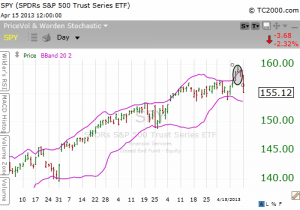A friend asked me today what a forward contract is. Here is a brief summary:
A “forward contract” is a private agreement between a buyer and a seller that calls for the delivery of an asset at a future point in time with a price agreed upon today. A futures contract is the same as a forward contract but it is traded on an organized exchange with standardized terms.
To put it in simple terms, ordering pizza to be delivered is a forward contract. The customer and the restaurant agree that the customer will buy the pizza at a specific price at a future point in time (“around 30 minutes”). When the pizza arrives, the customers has to accept delivery of and pay for the pizza, even if the customer found an advertisement for a cheaper pizza elsewhere.
In a forward contract, both parties are legally committed and cannot get out of the commitment. However, one party can enter into a new, offsetting forward contract to unload their end of the commitment. As an example, if the buyer of the pizza decided they want to go out for dinner instead, they can establish a forward contract with their neighbor. When the pizza arrives, they pay for it, accept delivery, then deliver the pizza to the neighbor and get paid from him (or her). Maybe if they are good negotiator they could even have made an extra dollar or two!
In a forward contract, each party is subject to the default of the other. So in the pizza example, when the pizza arrives and there is no one there to pay for the pizza, the buyer has defaulted.
If the contract was on a futures exchange there would probably be something called a daily settlement. For each contract there is an initial margin, which is the amount that must be deposited on the day the transaction is opened and a maintenance margin. The maintenance margin must be maintained every day thereafter.
Those are the basics.
(parts of the pizza example were summarized from “An Introduction to Derivatives and Risk Management” by Don M. Chance and Robert Brooks)

